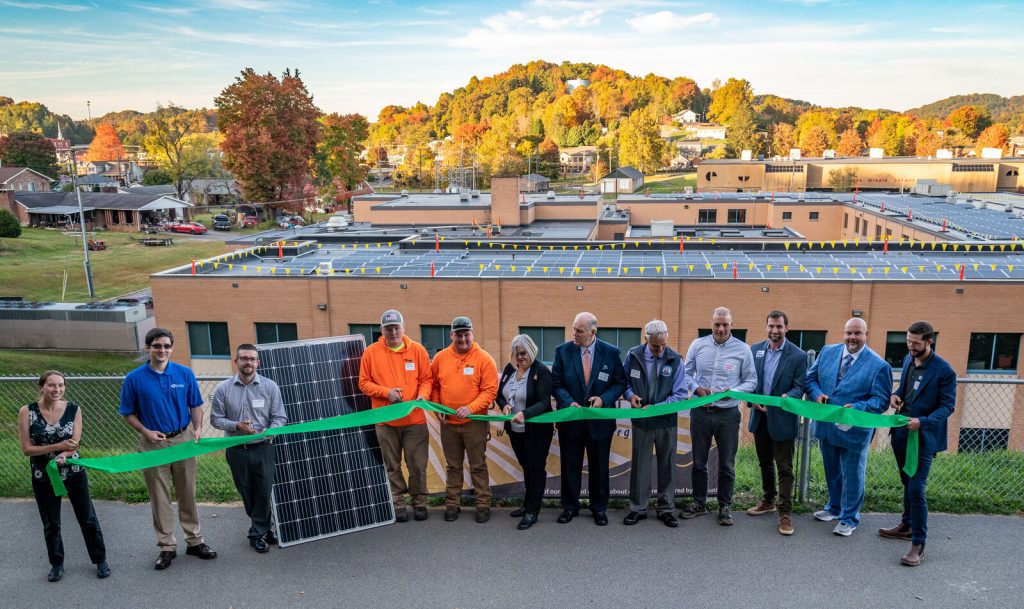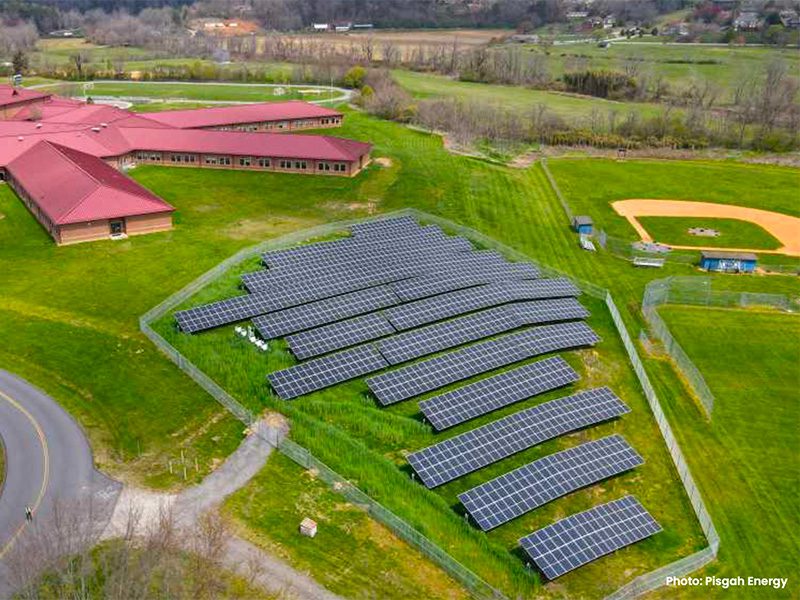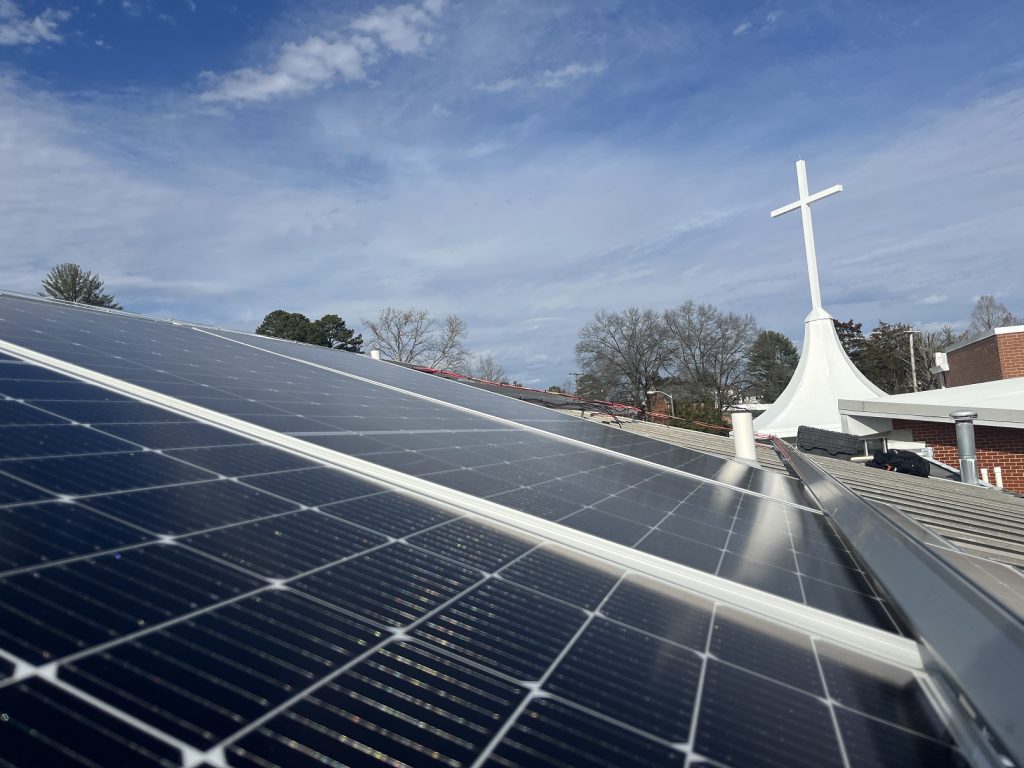Front Porch Blog
This blog is the second in a series. You can read Part 1 here.
By Sarah Dean
Across Central and Southern Appalachia, the federal clean energy tax credits expanded by the Inflation Reduction Act are helping communities take action to support new jobs and save money with American-made energy. From schools to churches to public parks, institutions that once saw solar energy as out of reach are now installing systems that cut costs, support their missions, and reduce strain on aging infrastructure.
Thanks to tools like the Investment Tax Credit, Energy Communities Bonus and Direct Pay option for nonprofits, solar has become more affordable and more common throughout the region. But under proposed federal legislation that passed the U.S. House of Representatives last month, H.R. 1, these tools would be repealed. Here are some of the inspiring ways schools, faith communities and local governments in Virginia, North Carolina and Tennessee are putting these incentives to work.

Virginia
In Virginia’s coalfield region, schools are taking the lead on clean energy.
Lee County Public Schools recently installed rooftop solar systems on six school buildings. With help from IRA tax credits and other funding, the district was able to install more than 1 megawatt of solar capacity without any upfront cost. The energy generated is expected to save the school system hundreds of thousands of dollars over the life of the systems, funds that can go back into classrooms, not utility bills.
In neighboring Wise County, the public school system took on a similar project. The 3.4 megawatt solar installation covers 11 school buildings and is expected to save the county more than $10 million over 30 years. The solar provider estimates that the project will offset more than 85% of the schools’ electricity needs.
Meanwhile, the Four Seasons YMCA in Norton, a local hub for childcare, youth sports and wellness, used direct pay to install a 60 kilowatt solar system. It’s expected to save $9,000 in its first years alone. As a nonprofit, the YMCA qualified for a full refund of the tax credits even though it doesn’t pay federal income taxes. These savings help keep the organization’s programs accessible to families throughout the area.

North Carolina
In Buncombe County, North Carolina, local officials are using solar to make public infrastructure more resilient. After Hurricane Helene devastated the region in 2024, community leaders saw solar energy as part of the recovery plan.
With the help of the IRA’s direct pay options and bonus credits, Buncombe County installed 7 megawatts of solar across 47 public buildings, including schools, libraries and public offices. The solar panels are expected to save the county over $17 million over their lifetime. At a time when budgets are tight and communities are still recovering, these savings go a long way toward long-term resilience.
Boone, North Carolina, is also embracing solar in public spaces. The town recently completed a solar project at Clawson-Burnley Park, where panels were installed on picnic shelters. While the system is relatively small, it helps reduce the strain on the local power grid and shows how public spaces can also serve as platforms for clean energy education.
In Hendersonville, First United Methodist Church took a big step by installing a 137 kilowatt solar array, the largest in the city’s downtown. Thanks to the IRA credits and a generous utility rebate, the church expects to save more than $570,000 in electricity costs over the system’s lifetime. The solar installation supports the congregation’s broader commitment to environmental stewardship, which also includes a community garden and energy-efficient lighting upgrades.

Tennessee
In East Tennessee, faith communities are stepping up.
Faith Lutheran Church in Oak Ridge recently installed a 38 kilowatt solar system that now powers much of the church’s daily operations. Like many small congregations, the church doesn’t owe federal income taxes, but thanks to the direct pay provision in the IRA, it could still claim the full value of the tax credit as a cash refund. This made the project affordable and allowed the church to reinvest savings into outreach efforts.
Just a few miles away, First Presbyterian Church of Oak Ridge installed a 22 kilowatt system with help from federal tax credits and community support. Its solar panels now provide more than 50% of the building’s electricity needs. The project has already reduced their utility bills, making more funds available for the church’s mission work and community partnerships.
These congregations are showing that solar isn’t just for big institutions. With the right support, smaller organizations can take meaningful steps to reduce costs and care for creation.
From the mountains of Virginia to the foothills of North Carolina and Tennessee, solar energy is helping Appalachian communities save money, strengthen services and prepare for the future. Thanks to the clean energy tax credits in the Inflation Reduction Act, these projects are becoming easier to access, especially for nonprofits, schools and municipalities that haven’t traditionally had access to such resources.
If these credits remain in place, even more communities will be able to follow in their footsteps. That means more local jobs, more budget-friendly public services, and stronger, more sustainable institutions across the region.
But Congress is considering eliminating these tax credits in its massive spending and tax bill, H.R. 1. Take action now to tell Congress to let Appalachia keep building! Want to dive even deeper? Download our report, “Clean Energy Tax Credits: Working for Appalachia.”
PREVIOUS
NEXT
Related News

Leave a comment
Your email address will not be published. Required fields are marked *

Leave a Comment